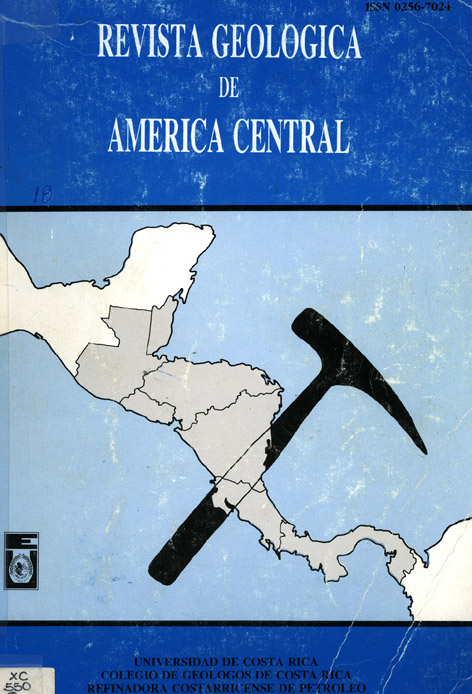Abstract
On the Central Pacific of Costa Rica, more than 1600 km of seismic reflection data, and potential field data, located offshore and onshore, joined to the surface geology data have been analyzed in order to clarify the structural configuration, tectonic evolution and characteristics of the sedimentary infill. Two main depocenters are recognaized in the area: the Nicoya basin comprising about 3.5 km of Cretraceous-Tertiary sediments in the offshore region of the Nicoya Gulf and extending toward the noretheast on the onshore region; and the Parrita basin located offshoreand onshore with a sedimentary fill of more 4.5 km. Both basins are limited on the south by a shallow uplift of the basement which represents an extension of the outer arc over the platform.
It is interpreted that in the Cretaceous, the area now occupied by the Nicoya and Patarrita basins, was part of an extense forearc system that spanned along the Pacific margin of Costa Rica encompassing the Tempisque and Terraba basins. The present structural configuration of the Parrita and Nicoya Basins initiates in the Middle Eocene, relatedto shear stresses caused by the rotationin clockwise direction of the southern portion of the Costa Rica territory along a main transcurrent fault zone. Such movement displaced the Tempisque and Terraba basins on the south and north respectively, developing the half-graben configuration and the extense system of strike-slip faults of the transtension and the subsidence along this series of faults, transverse to the coast, which are in some cases, still active.
The seismic stratigraphy analysis defines five seismic sequences and a equal number of time structure maps, besides the top of basement. This analysis has been tied up to the surface geology information and discussed under the light of sequence stratigraphy concepts. In general, the sediment in depocenters of this central Pacific region of Costa Rica, can be characterized as a shallowing upward megasequence, including deposits ranging from slope to shallow marine.






